Publishers of fine books in art history, architecture, photography, archaeology, conservation, and medieval and Renaissance studies. http://www.getty.edu/publications.
Don't wanna be here? Send us removal request.
Photo

Hi friends! We’re making some improvements to our social media across the Getty, and this page will soon merge with the larger tumblr for the Getty.
To keep receiving news from Getty Publications, please check out our other social media platforms!
On Twitter: https://twitter.com/GettyPubs
On Facebook: https://www.facebook.com/GettyPublications/
Thank you for being fans of Getty Publications—see you soon on our other pages!
Image credit: Possibly Sir Benjamin Simpson (British, 1831 - 1923)
[People in a canoe at sunset], about 1867, Albumen silver print 21.5 × 25.6 cm (8 7/16 × 10 1/16 in.) The J. Paul Getty Museum, Los Angeles
1 note
·
View note
Video
youtube
When you love illuminated manuscripts so much you willingly hop into costume to passionately recreate a scene from a medieval romance…
The two authors of The Adventures of Gillion de Trazegnies play truth or dare about their new book on the medieval romance of Gillion de Trazegnies.
92 notes
·
View notes
Photo

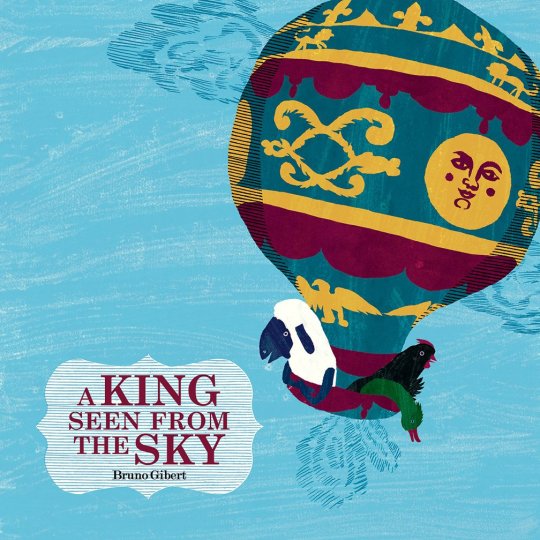

Our summer sale includes some of our most beloved children's titles. In "The Goldfish in the Chandelier," you can follow the adventures of a nineteenth-century French boy inspired by the Gérard-Jean Galle chandelier, one of the most popular pieces in the J. Paul Getty Museum's impressive collection of French decorative arts! Or you can get a whimsical look at the beasts of classical mythology in "Greece! Rome! Monsters!" And in "The King as Seen from the Sky," you can learn about the first hot air balloon through the eyes of the barnyard animals who were its riders. http://bit.ly/2bmg0Yl
3 notes
·
View notes
Photo


Discover the architecture of Los Angeles with Getty Publications!
1 note
·
View note
Photo


In 2008, the Berlin Antikensammlung initiated a project with the J. Paul Getty Museum to conserve a group of ancient funerary vases from southern Italy. Monumental in scale and richly decorated, these magnificent vessels were discovered in hundreds of fragments in the early nineteenth century at Ceglie, near Bari. Acquired by a Bohemian diplomat, they were reconstructed in the Neapolitan workshop of Raffaele Gargiulo, who was considered one of the leading restorers of antiquities in Europe. His methods exemplify what was referred to as “une perfection dangereuse,” an approach to reassembly and repainting that made it difficult to distinguish what was ancient and what was modern. Bringing together archival documentation and technical analyses, Dangerous Perfection provides a comprehensive study of the vases and their treatment from the nineteenth century up to today.
2 notes
·
View notes
Photo

The Romance of Gillion de Trazegnies is a truly epic tale complete with a labyrinthine plot and an ample cast of characters. One of the loveliest copies of the Romance is housed at the Getty--a manuscript in fine condition with rich illuminations in vivid color and fine gold leaf. As behooves such a remarkable object, the book on the it is "[a] sumptuously produced and indisputably elegant work" (Times Literary Supplement). You can learn more about the publication and the manuscript itself, through our website here.
Lieven van Lathem (Flemish, about 1430 - 1493, active 1454 - 1493) and David Aubert (Flemish, active 1453 - 1479) Gillion Slaying King Ysore and Free the Sultan. Tempera colors, gold, and ink on parchment Dimensions: Leaf: 37 x 25.5 cm (14 9/16 x 10 1/16 in.) The J. Paul Getty Museum, Los Angeles
11 notes
·
View notes
Photo

Robert Irwin began his career in the 1950s as an abstract painter. As a pioneer of the Light and Space movement in Los Angeles in the 1970s and early '80s, Irwin focused on exploring aesthetic perception as the fundamental feature of art, culminating in what he terms "conditional art" or "site-conditioned work."
In addition to being a prolific artist, Irwin has been an active writer throughout his career. This book includes previously published pieces along with a significant selection of writings published for the first time. The texts cover a diverse terrain such as the lessons of modern art, Irwin's philosophy of teaching, and his understanding of art as a form of pure inquiry, presenting the reader with an overview of his unique perspective within the broad discourse of postwar American art. The book makes clear that writing as a reflection on aesthetic questions is an integral element of Irwin's multifaceted art practice. Get your own copy here.
3 notes
·
View notes
Photo

Futurist Painting Sculpture (Plastic Dynamism), a truly radical book by Umberto Boccioni (1882–1916), claimed a central position in artistic debates of the 1910s and 1920s, exerting a powerful influence on the Italian Futurist movement as well as on the entire European historical avant-garde, including Dada and Constructivism. Today, Boccioni is best known as an artist whose paintings and sculptures are prized for their revolutionary aesthetic by American and European museums. But Futurist Painting Sculpture demonstrates that he was also the foremost avant-garde theorist of his time. This new English translation is available here.
6 notes
·
View notes
Photo


Théodore Rousseau (here seen in a photograph by Nadar) was one of the most important artists of the Barbizon school. He embraced plein-air painting and during the summer used a special easel and lean-to in order to paint comfortably outdoors; through this practice he was able to convey the lush unruliness of nature. Forest of Fontainebleau, Cluster of Tall Trees Overlooking the Plain of Clair-Bois at the Edge of Bas-Bréau featured below is a fine example of Rousseau's style and embodies a natural romanticism that permeated his work. Our new catalogue on the artist, Unruly Nature can be found here.
Captions and credits: Nadar [Gaspard Félix Tournachon] (French, 1820 - 1910) [Théodore] Rousseau, 1855 - 1859, Salted paper print 25.9 × 20.3 cm (10 3/16 × 8 in.) The J. Paul Getty Museum, Los Angeles
Théodore Rousseau (French, 1812 - 1867) Forest of Fontainebleau, Cluster of Tall Trees Overlooking the Plain of Clair-Bois at the Edge of Bas-Bréau, about 1849 - 1852, Oil on canvas 90.8 × 116.8 cm (35 3/4 × 46 in.) The J. Paul Getty Museum, Los Angeles
10 notes
·
View notes
Photo

In 1896, Otto Wagner’s Modern Architecture shocked the European architectural community with its impassioned plea for an end to eclecticism and for a “modern” style suited to contemporary needs and ideals, utilizing the nascent constructional technologies and materials. Through the combined forces of his polemical, pedagogical, and professional efforts, this determined, newly appointed professor at the Vienna Academy of Fine Arts emerged in the late 1890s—along with such contemporaries as Charles Rennie Mackintosh in Glasgow and Louis Sullivan in Chicago—as one of the leaders of the revolution soon to be identified as the “Modern Movement.” Wagner’s historic manifesto is now presented in a new English translation—the first in almost ninety years—based on the expanded 1902 text and noting emendations made to the 1896, 1898, and 1914 editions. In his introduction, Dr. Harry Mallgrave examines Wagner’s tract against the backdrop of nineteenth-century theory, critically exploring the affinities of Wagner’s revolutionary élan with the German eclectic debate of the 1840s, the materialistic tendencies of the 1870s and 1880s, and the emerging cultural ideology of modernity. Modern Architecture is one of those rare works in the literature of architecture that not only proclaimed the dawning of a new era, but also perspicaciously and cogently shaped the issues and the course of its development; it defined less the personal aspirations of one individual and more the collective hopes and dreams of a generation facing the sanguine promise of a new century. The Texts & Documents series offers to the student of art, architecture, and aesthetics neglected, forgotten, or unavailable writings in English translation. Edited according to modern standards of scholarship, and framed by critical introductions and commentaries, these volumes gradually mine the past centuries for studies that retain their significance in our understanding of art and of the issues surrounding its production, reception, and interpretation. Eminent scholars assist in the selection and publication of volumes in the Texts & Documents series. Each volume acquaints readers with the broader cultural conditions at the genesis of these texts and equips them with the needed apparatus for their study. Over time the series will greatly expand our horizon and deepen our understanding of critical thinking of art.
You can read this book for free in our Virtual Library!
3 notes
·
View notes
Photo

Advances for our book on Marie-Antoinette--and her material culture--arrived today and they're beautiful! Marie-Antoinette offers gorgeous reproductions of some of the most potent symbols of her royalty, from her marriage bed to her collection of chinoiserie, as well as her personal items, such as her sewing kits and her children's toys. Taken as a whole, the objects surrounding Marie-Antoinette breathe new life into her story.
2 notes
·
View notes
Photo

Between 1979 and 1988, the Mexican photographer Graciela Iturbide (b. 1942) made a series of visits to Juchitán, Mexico, where—in her words—she photographed the way of life there "in complicity with the people." Located in the state of Oaxaca, Juchitán is an ancient, communal, matriarchal society. It is also an open, fiercely independent, fiesta-loving city. Since the early twentieth century, the women of Juchitán—their dress and manner—have been national symbols, and Iturbide's photographs capture them in public and in private as they conduct their lives in this ancient city in the Isthmus of Tehuantepec. Read more about these photographs in our book about Iturbide's series here.
34 notes
·
View notes
Photo

This initial Q from the gorgeous manuscript of "The Romance of Gillion de Trazegnies" depicts our hero Gillion as he reacts to the news of the death of his pregnant wife. Gillion swoons in the center of the image, while Gracienne (in blue) and Hertan (in green) rush to catch him. Gillion's antagonist, Amaury (in gold), has body language that depicts joy. But (spoiler alert!) the news is actually untrue, and Gillion will eventually be reunited with his family who are very much alive!
Intrigued by this brief glimpse into Gillion's remarkable story--and the beautiful manuscript that tells the tale? Check out The Adventures of Gillion de Trazegnies for more information about both!
2 notes
·
View notes
Photo

Prussian blue--here seen in Canaletto's gorgeous depiction of Venice's grand canal--was discovered in 1703 by a dye-maker who accidentally allowed potash and animal's blood to mix when trying to create a completely different hue. The result is this deep rich blue, used by artists around Europe to render water and sky. Read more about the origins of Prussian blue and many other colors in our book The Brilliant History of Color in Art!
Canaletto (Giovanni Antonio Canal) (Italian, 1697 - 1768) The Grand Canal in Venice from Palazzo Flangini to Campo San Marcuola, about 1738, Oil on canvas 47 × 77.8 cm (18 1/2 × 30 5/8 in.) The J. Paul Getty Museum, Los Angeles
5 notes
·
View notes
Photo
Get a behind the scene look at how art books are made! As well as glimpses into the work lives of other Getty employees with this great Instagram series from @thegetty !!
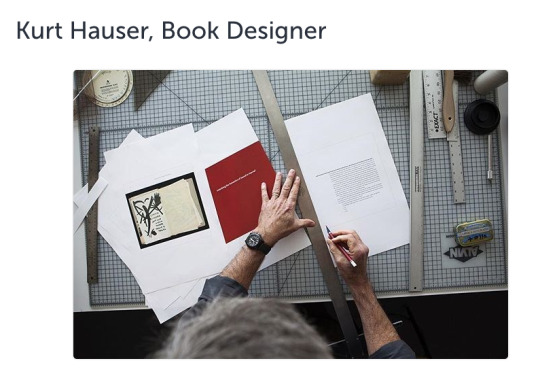
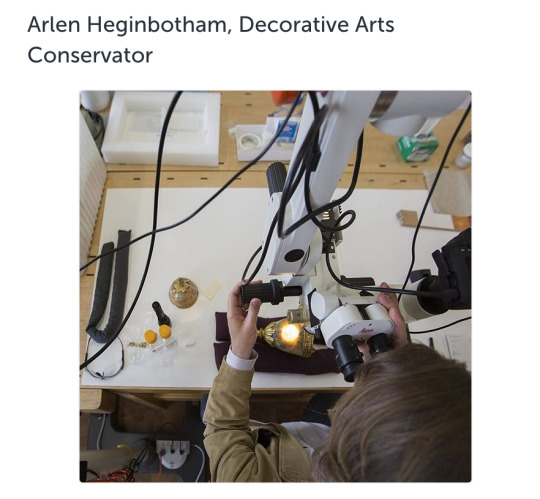
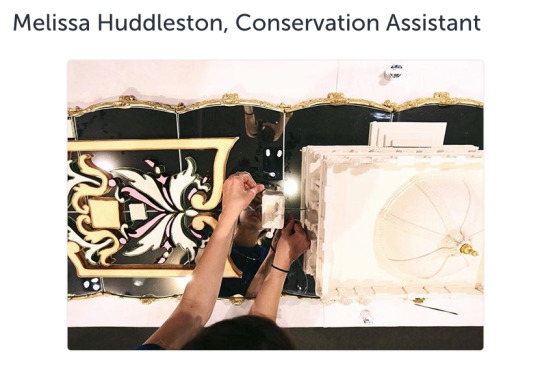
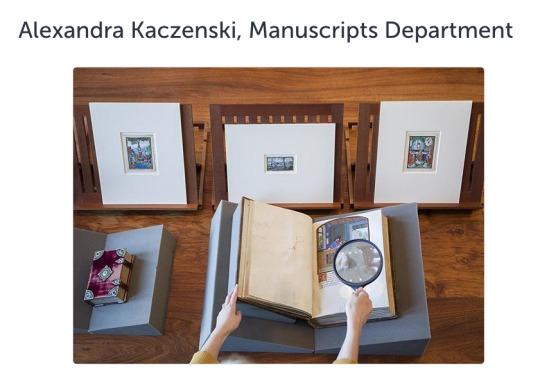
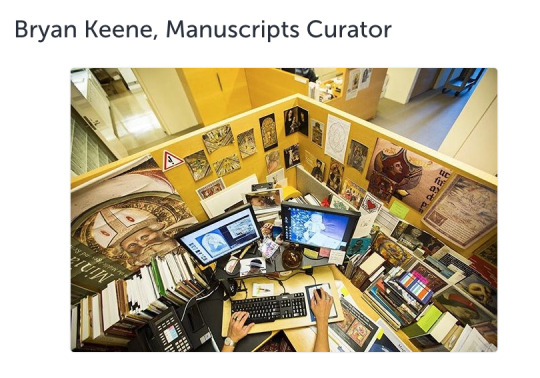
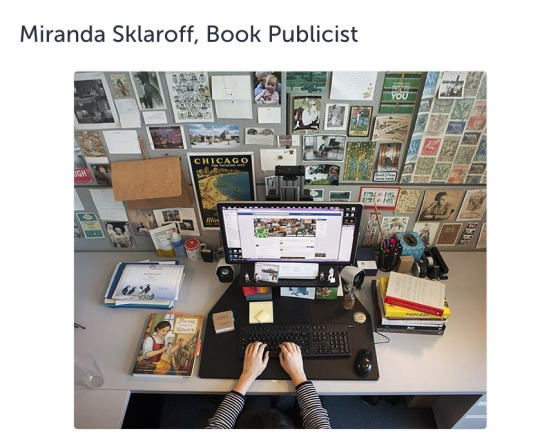
One Getty, Many Ways of Working
The Getty is more than a museum — our staff is comprised of scientists, graphic designers, security specialists, conservators, book publishers, tech nerds, and more.
#TodaysDesk is a series on Instagram to share weekly portraits of workspaces across the Getty.
Here’s a few from that series, click through to read what they are up to and hear about their favorite parts of their jobs.
Kurt the Book Designer
Arlen the Decorative Arts Conservator
Melissa the Conservation Assistant
Alexandra from the Manuscripts Department
Bryan the Manuscripts Curator
Miranda the @gettypubs Book Publicist
198 notes
·
View notes
Photo



Last week, the @gettypubs staff got to take a trip to visit the wonderful Black Mountain College exhibition at the @thehammermuseum. Inspired by Anni Albers’s simple yet elegant jewelry, we made some of our own!
11 notes
·
View notes
Photo
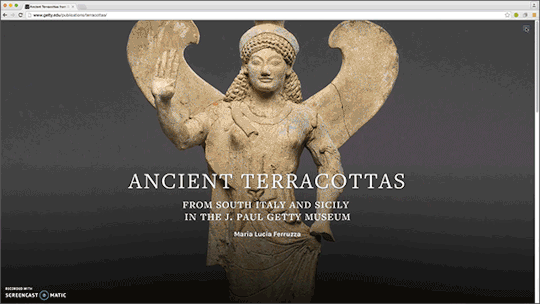
Learn about our new open-access online catalogues (also available in a variety of other formats) today on The Getty Iris!
5 notes
·
View notes